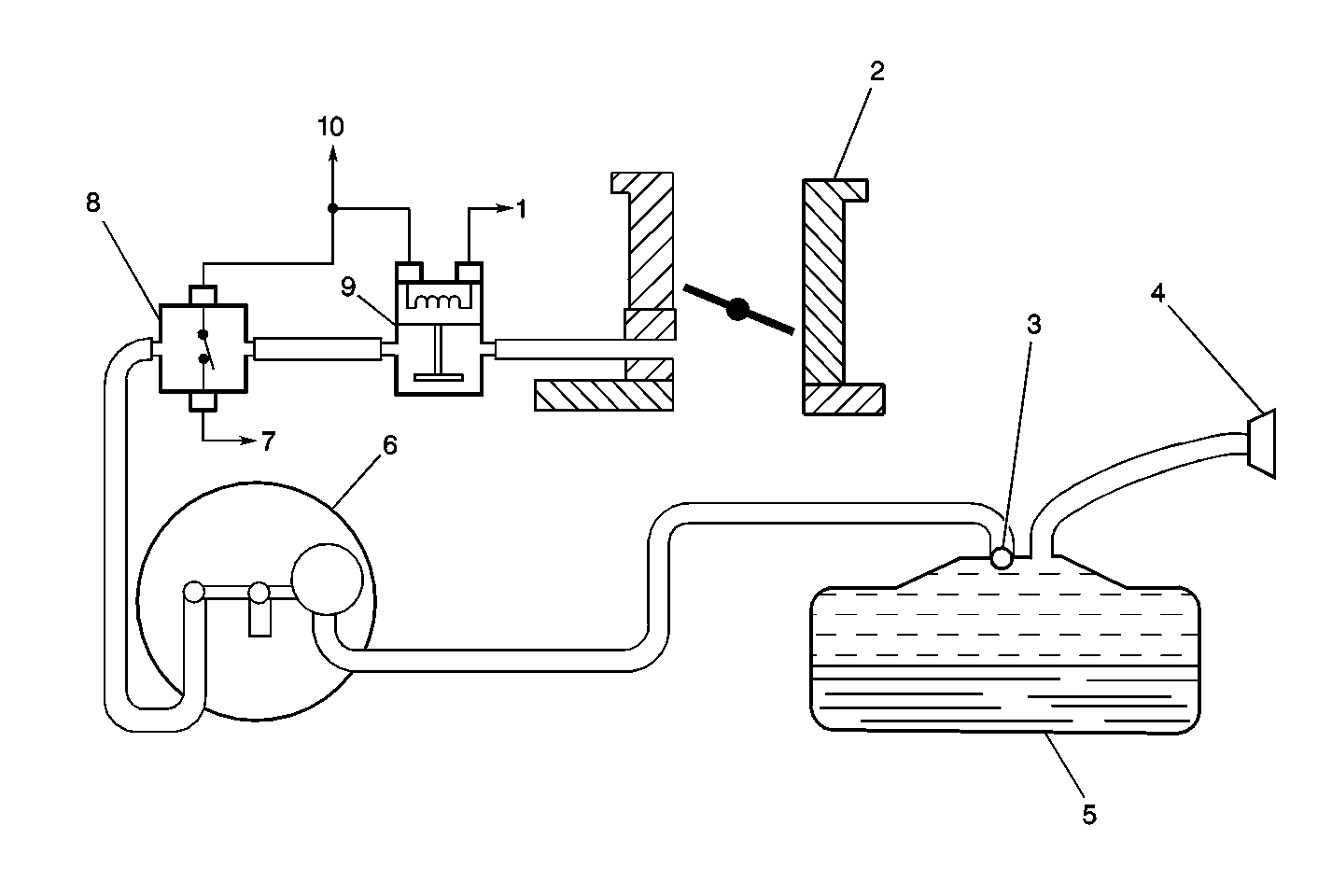The EVAP purge valve allows
manifold vacuum to purge the canister. The Powertrain Control Module (PCM)
supplies a ground to energize the EVAP purge valve (purge ON ). The EVAP purge
valve control circuit is Pulse Width Modulated (PWM) or turned ON and OFF
several times a second. The PCM controlled PWM output is commanded when the
appropriate conditions have been met:
Canister purge PWM duty cycle varies according to operating conditions
determined by mass air flow, fuel trim, intake air temperature, and throttle
position. Canister purge will be disabled if TP angle increases to above 70%.
Canister purge will be re-enabled when TP angle decreases below 66%.
The EVAP vacuum switch is a normally closed switch positioned in the
purge line between the canister and the EVAP purge valve. The EVAP vacuum
switch will open when vacuum increases to greater than 5 inches of water in
the purge line. The EVAP vacuum switch is used by the PCM to monitor EVAP
purge valve operation and purge system integrity. The EVAP vacuum switch should
be closed with no vacuum present (0% EVAP Canister Purge PWM). With EVAP Canister
Purge PWM at 25% or greater, the EVAP vacuum switch should open.
Poor idle, stalling and poor driveability can be caused by the following
conditions:
An incorrect EVAP purge system flow should set a DTC P0441. A continuous
purge condition with no purge commanded by the PCM should set a DTC P1441.

